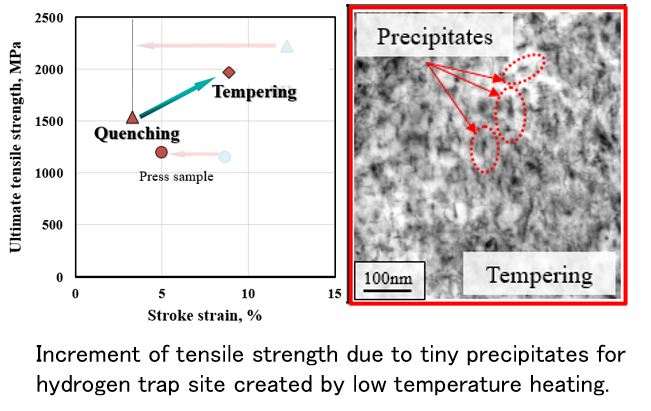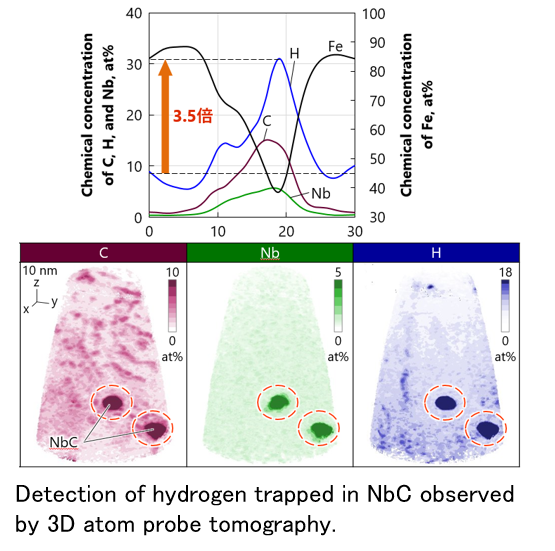Example
Increased resistance to hydrogen embrittlement in high-strength steels
Automobile bodies are fabricated using stamped frame structures. The body design should ensure high crash resistance and light weight to guarantee the safety of the people in the automobile and improve fuel efficiency, respectively. Thus, high-strength steel has been employed in the manufacture of frame structures. In recent years, high strength steel have been increasingly used to manufacture car. Stamping is one of the technologies used to produce components made of steel with a tensile strength of >1,500 MPa. However, stamped high strength steels face several challenges, e.g. hydrogen-induced delay fracture, which should be eliminated before using the steel for automobile parts. This challenge is particularly present in stamped steels with high tensile strength of >1,500 MPa, as they are more sensitive to hydrogen embrittlement. In our study, an attempt was made to control the hydrogen immersed in steels by microstructure, e.g., precipitates. Several chemical elements, such as Nb, Mo and Si, were found to be useful elements to make tiny precipitates for hydrogen trapping, leading to high resistance to hydrogen embrittlement in high-strength steels. Now, the hydrogen embrittlement mechanism was numerically analyzed.




Representative
